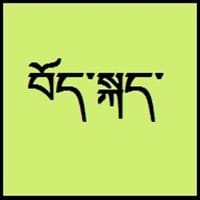Countries
China, Nepal
Hong Kong, Macau
National Language
Nepal, Tibet
China, Guangdong
Second Language
Not spoken in any of the countries
Not spoken in any of the countries
Speaking Continents
Asia
Asia
Minority Language
China, India, Nepal
Hawaii
Regulated By
Committee for the Standardisation of the Tibetan Language
Civil Service Bureau, Government of Hong Kong, Official Language Division
Interesting Facts
- Tibetan dialects vary alot, so it's difficult for tibetans to understand each other if they are not from same area.
- Tibetan is tonal with six tones in all: short low, long low, high falling, low falling, short high, long high.
- Cantonese have lot of slangs, many of them include words that do not make sense at all and some also have English in them.
- Even though Cantonese and Mandarin are dialects of Chinese, Cantonese has 8 tones instead of Mandarin's 4.
Similar To
Not Available
Chinese Language
Derived From
Not Available
Not Available
Alphabets in
Tibetan-Alphabets.jpg#200
Cantonese-Alphabets.jpg#200
Scripts
Tibetan alphabet, Tibetan Braille
Chinese Characters and derivatives
Writing Direction
Left-To-Right, Horizontal
Left-To-Right, Horizontal, Top-To-Bottom
Hello
བཀྲ་ཤིས་བདེ་ལེགས། (tashi delek)
您好
Thank You
ཐུགས་རྗེ་ཆེ་། (tujay-chay)
谢谢
How Are You?
ཁྱེད་རང་སྐུ་གཇུགས་བདེ་པོ་ཡིན་པས།
(kayrang kusu debo yimbay?)
你好吗?
Good Night
གཟིམ་ལཇག་གནང་དགོས་། (sim-jah nahng-go)
晚安
Good Evening
དགོང་དྲོ་བདེ་ལེགས།
晚上好
Good Afternoon
ཉིན་གུང་བདེ་ལེགས།
下午好
Good Morning
སྔ་དྲོ་བདེ་ལེགས། (nga-to delek)
早上好
Please
thu-je zig / ku-chee.
请
Sorry
ཀོང་དགས་། (gawn-da)
遗憾
Bye
ག་ལེར་ཕེབས་། (kha-leh phe)
再见
I Love You
ང་ཁྱེད་རང་ལ་དགའ་པོ་ཡོད་ (nga kayrâng-la gawpo yö)
我爱你
Excuse Me
དགོངས་དག བཟོད་དུ་གསོལ། ཐུགས་རྗེ་གཟིགས།
原谅我
Dialect 1
Central Tibetan
Guangzhou
Where They Speak
China, India, Nepal
outside mainland China
How Many People Speak
Not Available
Dialect 2
Khams Tibetan
Xiguan
Where They Speak
Bhutan, China
Hong Kong
How Many People Speak
Not Available
Dialect 3
Amdo Tibetan
Hong Kong
Where They Speak
China
Hong Kong
How Many People Speak
Not Available
Speaking Population
Not Available
Native Name
བོད་སྐད་ (pö-gay)
Kwang Tung Wa
Alternative Names
Bhotia, Dbus, Dbusgtsang, Phoke, Tibetan, U, Wei, Weizang, Zang
Guangfu, Metropolitan Cantonese
French Name
tibétain
Not Available
German Name
Tibetisch
Not Available
Pronunciation
Not Available
Not Available
Ethnicity
tibetan people
Not Available
Origin
c. 650
17th century
Language Family
Sino-Tibetan Family
Sino-Tibetan Family
Subgroup
Tibeto-Burman
Not Available
Branch
Not Available
Not Available
Early Forms
Old Tibetan, Classical Tibetan
No early forms
Standard Forms
Standard Tibetan
Standard Cantonese
Signed Forms
Tibetan Sign Language
Not Available
Scope
Not Available
Not Available
ISO 639 1
bo
No data available
ISO 639 2/T
bod
Not Available
ISO 639 2/B
tib
Not Available
ISO 639 3
bod
No data available
ISO 639 6
Not Available
Not Available
Glottocode
tibe1272
cant1236
Linguasphere
No data Available
No data available
Language Type
Not Available
Not Available
Language Linguistic Typology
Not Available
Not Available
Language Morphological Typology
Not Available
Not Available
All Tibetan and Cantonese Dialects
Most languages have dialects where each dialect differ from other dialect with respect to grammar and vocabulary. Here you will get to know all Tibetan and Cantonese dialects. Various dialects of Tibetan and Cantonese language differ in their pronunciations and words. Dialects of Tibetan are spoken in different Tibetan Speaking Countries whereas Cantonese Dialects are spoken in different Cantonese speaking countries. Also the number of people speaking Tibetan vs Cantonese Dialects varies from few thousands to many millions. Some of the Tibetan dialects include: Central Tibetan, Khams Tibetan. Cantonese dialects include: Guangzhou , Xiguan. Also learn about dialects in South American Languages and North American Languages.
Tibetan and Cantonese Speaking population
Tibetan and Cantonese speaking population is one of the factors based on which Tibetan and Cantonese languages can be compared. The total count of Tibetan and Cantonese Speaking population in percentage is also given. The percentage of people speaking Tibetan language is Not Available whereas the percentage of people speaking Cantonese language is 16.00 %. When we compare the speaking population of any two languages we get to know which of two languages is more popular. Find more details about how many people speak Tibetan and Cantonese on Tibetan vs Cantonese where you will get native speakers, speaking population in percentage and native names.
Tibetan and Cantonese Language Codes
Tibetan and Cantonese language codes are used in those applications where using language names are tedious. Tibetan and Cantonese Language Codes include all the international language codes, glottocodes and linguasphere.





